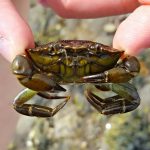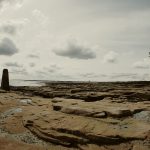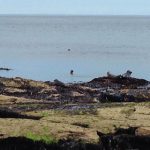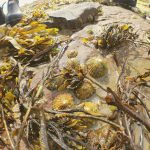After several years of wet, windy and wintery summer term ecology field trips to St Mary’s Lighthouse, this year’s Applied Science and Biology A-level students were incredibly lucky and completed their ecology project in weather which actually resembled summer time!
With the temperature probes reading 21 °C it was ‘almost’ tropical down at the coast and the students took to the shores ready to sample the diversity of the local rock pools. While some students investigated how limpet shell height changed with increasing distance to the low intertidal zone, others investigated the distribution and abundance of rock pool species such as limpets, barnacles and dog whelks. Establishing links between scientific research and the first hand data collected by the students has given our A level scientists a taste for the job role of so many scientific careers ‘ from ecology and conservationists to marine biologists.
Burnside students weren’t the only ones making the most of the gorgeous weather. We were fortunate enough to see a pod of seals basking in the sunshine on the rocks of the East shore.
Now it’s back to the lab to analyse the data and find out exactly what happens to limpet shell height as you get closer to the sea and why do you find more limpets on the South shore.






